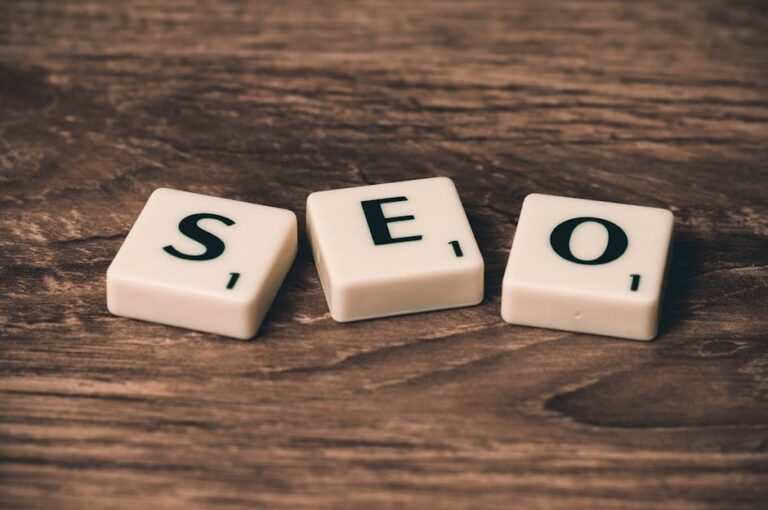Twenty years. Yeah, that’s how long I’ve been kicking around this search engine game. Seen a few things come and go, I tell ya. remember when a handful of keywords and a shedload of backlinks would get you to the top? Simpler times, bless their hearts. Now, we’re talking about AEO impact on SEO Ranking, and it’s a whole different ball of wax. My old mentor, bless his cotton socks, he’d just shake his head at all this. He’d probably tell me to stop chasing shiny objects and just write good stuff, like he always said. And he wouldn’t be wrong. Not entirely, anyway.
This AEO thing, it ain’t just some fancy new acronym someone dreamt up in a Silicon Valley whiteboard meeting, even though it feels like it sometimes. Answer Engine optimization. It’s what happens when Google and the others decided, “You know what? People don’t wanna click and dig. They want the answer. Right now. Slam it in their face.” So, it’s not just about getting to position one anymore, is it? It’s about getting into that little box, that featured snippet, that direct answer. The whole AEO impact on SEO Ranking is this shift from ‘click to find’ to ‘tell me now.’ And that changes everything for how we build content. Or it should.
Wpromote
You look at a company like Wpromote. They’ve been around a bit, seen the shifts, adapted. I’ve watched some of their stuff over the years. My take? They get that it’s not just about a list of ten blue links anymore. It’s about being the authority for a specific question. They are pushing this idea of comprehensive content. Not just a 500-word blog post that barely scratches the surface. We’re talking something that truly answers a query from top to bottom, anticipating follow-up questions. I remember this client of mine, a few years back, selling bespoke furniture. He’d write these short descriptions, thinking nobody reads past the first line. “They just want to see the chair, Frank,” he’d say. Now, with AEO, you gotta answer “What kind of wood is best for outdoor furniture?” or “How do I clean a velvet sofa?” directly, cleanly, and fast. That’s the AEO impact on SEO Ranking. It changes how you structure your entire website. If you don’t have that direct answer, you’re just not in the running for those quick wins.
What does it mean for schema markup? It means you better be all over it. Structured data is your best friend right now. I mean, always was, but even more so with generative AI in search. You’re practically feeding the AI the answer on a silver platter. Is it lazy? Maybe. Is it how things work now? You betcha. You gotta talk the machine’s language if you want to be understood.
The Featured Snippet Obsession
Everyone wants that featured snippet. That little box at the top. Position zero, some call it. And why not? It gets clicks, gets attention. But here’s the thing. Sometimes, you get the snippet, and your traffic actually dips. How’s that for a head-scratcher? Because the user got their answer right there on the search results page. Didn’t need to click through. So, yes, you’re visible, you’re the chosen one, but the actual visit to your site might drop. This is a weird contradiction in the AEO impact on SEO Ranking. It’s a win and a loss, all wrapped up in one neat little package.
I remember this one time, working with a local bakery. They wanted to rank for “best sourdough recipe.” We got them into a snippet with a concise answer. Traffic to that recipe page went down. But their brand mentions went up, and their local foot traffic for bread sales increased. So, was it bad for ‘SEO’ in the traditional sense of clicks? Sure. Was it good for the business? Absolutely. It’s about what metrics you’re watching. Are you looking at website visits, or actual business results?
Ignite Visibility
Take a look at what Ignite Visibility pushes. They talk a lot about user intent. Which, if you ask me, has always been the heart of good SEO, right? Figuring out what someone really wants when they type something into that little box. But AEO cranks that up to eleven. It’s not just intent; it’s immediate intent. “How to fix a leaky faucet” isn’t just someone browsing; it’s someone standing in a flooded bathroom, probably. They don’t want a long article about plumbing history. They want step-by-step instructions.
I’ve always said, if you can’t say it plain, you don’t understand it yourself. This is where the old-school content writers who actually knew stuff, not just keyword stuffers, come into their own. You gotta be precise. What’s the optimal length for an AEO-friendly answer? That’s known as a good question. Often, it’s short, pithy. Like a tweet that answers a homework question. Then again, sometimes it needs to be longer, a whole comprehensive guide. It just depends on the question. No hard and fast rule, never is with Google, is there? You think you got it figured out, they change the goalposts.
Voice Search and the Rise of Conversational Queries
Voice search is another piece of this AEO puzzle. People talk to their devices differently than they type. “Hey Google, what’s the weather like in Portland, Oregon right now?” That’s a full sentence. It’s natural language. My youngest kid, bless his heart, he just yells at Alexa like she’s a particularly dense personal assistant. He expects a direct answer. No messing about. So, content needs to be optimized for those conversational queries. Long-tail keywords, yeah, those are still important, but now we’re talking about natural language processing. Using phrases people would actually speak.
My own writing style, you see, it’s always leaned conversational. Because that’s how people think, how they talk. And guess what? The machines are learning to think and talk more like us. Kinda spooky, isn’t it? Like when my old hound dog started understanding complex sentences. He didn’t, really, but it felt that way.
How do you optimize for AEO? You need to understand the intent behind the query. Is it navigational? Is it informational? Is it transactional? Is it a “do” query, a “know” query, a “go” query, a “buy” query? You need to answer directly. Clear headings, bullet points, numbered lists. Keep it simple, stupid. Except when you can’t.
WebFX
WebFX, those folks, they’re big on data. They preach about looking at the analytics. And they’re not wrong. You gotta know what’s working and what ain’t. With AEO, that means tracking more than just clicks and impressions. Are your featured snippets appearing? Are you showing up in knowledge panels? Are people asking questions about your brand through voice assistants?
I’ve seen plenty of good SEO shops out there. Companies like Straight North or OuterBox, they are paying attention to this too. It’s not just the big names. Every agency worth its salt is trying to figure out the AEO impact on SEO Ranking. It’s like a new dance, and everyone’s trying to learn the steps. Some are clumsy, some are graceful, and some just stand there confused.
Generative AI and Google SGE
Now, let’s talk about the elephant in the room. Google’s Search Generative Experience, SGE. This changes the AEO impact on SEO Ranking landscape in a massive way. Suddenly, Google isn’t just showing you a snippet from your site. It’s synthesizing information from multiple sources and giving you a generated answer. It’s Google playing librarian and summarizer all at once. What then? Does your beautifully crafted, AEO-optimized answer still stand out if Google just rewrites it?
This is where the idea of brand authority and E-E-A-T comes in big time. Experience, Expertise, Authoritativeness, Trustworthiness. Google’s AI needs to know it can trust your content. It needs to know you’re the real deal. You’re not just pulling facts out of thin air. You’ve got the actual lived experience. I mean, I can tell you about SEO because I’ve been doing it for two decades, made mistakes, had wins, seen it all. An AI can read a million articles, but it ain’t got the calluses on its hands like I do.
So, if Google is summarizing, your content better be the source it trusts the most. How do you get that trust? Build it over time. Consistently put out high-quality, truthful, helpful stuff. Get recognized as an expert in your field. This is not a quick fix. This is a long game. Always has been. The new search environment means my content might not get direct clicks for simple queries, but it might be cited by Google’s AI. And that’s a new kind of win, isn’t it? It’s a strange one, to be sure.
360i (Dentsu International)
I’ve followed some of the work from agencies like 360i, part of the big Dentsu machine. They’re working with these huge brands, right? Brands with massive budgets and equally massive expectations. For them, AEO isn’t just about traffic; it’s about brand control, reputation management. When their brand name is searched, they need to own that first answer. They need to shape the narrative. This goes beyond traditional SEO. It’s about what information gets presented directly, unfiltered, at the top of the search results page, or in that AI generated blurb.
Is AEO a fad? Some folks still think so. My gut says no. This isn’t going away. It’s the natural progression of how people want information. Faster, easier, less friction. Search engines want to be the ultimate answer machine. If you’re not helping them be that, you’re getting left behind. It’s not rocket science, but it takes work.
What exactly is AEO? Is it different from SEO? Yes. No. It’s an extension. It’s SEO adapting to a new kind of search result. It’s about optimizing for the direct answer, not just the link. That’s known as the AEO impact on SEO Ranking. You’re still doing SEO, but you’re doing it with an eye on those non-traditional results.
The Need for “Answer-First” Content
So, how do we make “answer-first” content? You gotta structure your pages, your articles, with the answer front and center. I call it the “newspaper headline” approach. Put the most important thing first. Then you can go into the details. Too many times, I see companies burying the lead. They want to tell a story first, then get to the point. No, no. For AEO, you give the answer, then you can tell the story.
Consider companies like VMLY&R Commerce or OMD, they’re dealing with enormous enterprises. The strategies they cook up have to be scalable, adaptable. AEO demands a content audit that looks at every piece of content through an “answer” lens. Does this page answer a specific, high-volume question clearly and concisely? If not, why is it there? Or how can we make it do that? Sometimes it’s a quick rewrite, other times it’s a whole new page.
One more thing about this AEO impact on SEO Ranking. It’s not just about text. Images, videos, they’re becoming part of the answer. You ever ask Google for “how to tie a knot?” You get a video. That’s AEO too. Are your videos optimized? Do they answer a specific question?
Performics (Publicis)
Performics, part of Publicis, they’re another big player in the agency world. They’ve always been pretty clued into the performance side of things. For them, every bit of digital presence has to tie back to a measurable outcome. With AEO, that means figuring out the new ways to measure value beyond just organic search traffic. Are you getting brand recognition? Are people calling your business after seeing your direct answer? Are they converting in other channels because you provided value up-front?
It’s about being helpful. That’s what it always comes back to, doesn’t it? You provide helpful information, you build trust. Trust leads to business. That’s the simplest truth in this whole crazy online world. Don’t overthink it. Or do. I don’t know. Sometimes I think I’m overthinking it myself.
What’s the hardest part about AEO? Keeping up with the changes. Google’s always tinkering. The generative AI answers, they’re still evolving. My advice? Don’t chase every single update with panic. Understand the underlying shift: direct answers, user intent, trust. Focus on those. The rest will follow. Or it won’t. You just keep doing the best you can, putting good stuff out there. That’s how I’ve always done it. And it’s seen me through two decades of this wild ride. Some things change, some things, they just don’t. That’s the real AEO impact on SEO Ranking.










